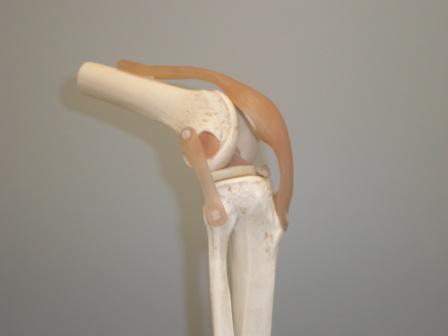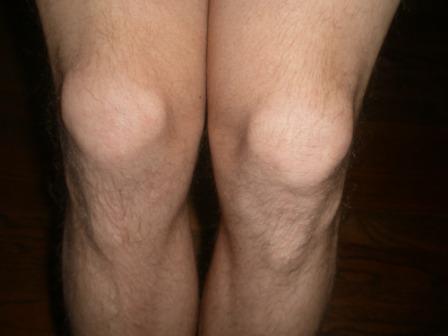Jumper’s Knee: Symptoms, Treatment, and Prevention (1 of 2)
Tuesday, May 19th, 2009So my self prognosis was close, I don’t have runner’s knee, I have jumper’s knee. It makes sense, even though I am a runner, I used to be a jumper when I was in the 82nd Airborne Division. My knee was X-rayed and examined by an Orthopedic doctor who specializes in sports medicine. He said he had dealt with a lot of runners and he seemed to know what he was talking about. The thing that makes me the most confident in his prognosis though is that he listened. Before he said anything he listened to my problem, asked me how I was feeling, and what kind of activities I had been doing before even touching my knee. Anyone can go to school for years, memorize all sorts of facts, take out student loans, make decisions that affect other people’s health, and wear long white coats but it takes a true genius to listen. More importantly, listen to me, I’ve got so much great stuff to say! Wait. If it takes a genius to listen, but I have important things to say…Here’s what Jumper’s Knee is all about:
Jumper’s Knee, or Patellar Tendonitis for you scientists types, is the inflammation to the band of tissue that connects the knee cap to the shin bone. Otherwise known as that long, skin colored piece on the right in the picture above going over the knee cap. Jumper’s Knee can be developed from a number of repeated activities such as jumping (also see trampoline knee), running, walking, or bicycling. Also, some people may develop jumper’s knee who have problems with the way their hips, legs, knees, or feet align.
Some of the symptoms of jumper’s knee include pain and tenderness around the patellar tendon, swelling in knee joint, pain with jumping or running, pain with bending or straightening the leg, or tenderness in the knee-cap. I personally have three of these five symptoms. The main symptom that lead me to go to the doctor, my knee giving out on an easy run, the doctor said is not a symptom usually seen in Jumper’s Knee. Go figure. This brings me back to knowing your body. No two people’s symptoms are the same, even for the same injury, so no matter what, it takes some self-prognosis or self-awareness.
Click here to learn more about the treatment and prevention of jumper’s knee. Overall, the doctor gave me clearance to begin running again which if nothing else, gives me the confidence to get back out there and run without severely injuring myself. I’m going to take it easy, do some swimming and stationary bike to supplement my running. I want nothing more than to lace up and run 20 miles right now but I have to hold myself back. I will also be doing some physical therapy twice a week for 4 weeks which should help. Before I start a training plan, I will be testing my knee this long weekend on a trail running trip and running a fun 5K in Raleigh, NC called the Skirt Chasers. You’re lucky I have a bum knee ladies.



